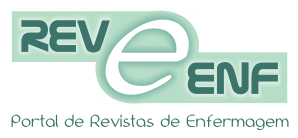<b>Breastfeeding: always a benefit, not always a pleasure</b> - doi: 10.4025/cienccuidsaude.v9i2.8963
Keywords:
Breastfeeding, Mother-child relationship, Maternal behavior.
Abstract
The benefits of breastfeeding are well disseminated in the scientific community and early weaning remains a concern for public health. However, the difficulties in the process and/or desire to make it are not thoroughly discussed. This study describes the meanings women attribute to breastfeeding and analyses its impact on their lives. This is a descriptive study with a qualitative approach, carried out in July 2009 in a Municipal Health Center, located in Rio de Janeiro, based on reports of 20 women about their perceptions on the process of breastfeeding. It was used a conceptual tool called theoretical saturation to determine the sample size of the study and the statements were analyzed by means of thematic analysis. It was found that the idea of breastfeeding as an instinctive and enjoyable experience was not a reality for tree of women and that the interviewees were aware of the importance of lactation, however, about 43% of their children under six months were no longer exclusively breastfed. So, it was concluded that, breastfeeding is a practice devised by the female universe, but it has different representations for women.Downloads
Download data is not yet available.
Published
2010-09-23
How to Cite
Marques, D. M., & Pereira, A. L. (2010). <b>Breastfeeding: always a benefit, not always a pleasure</b> - doi: 10.4025/cienccuidsaude.v9i2.8963. Ciência, Cuidado E Saúde, 9(2), 214-219. https://doi.org/10.4025/ciencuidsaude.v9i2.8963
Issue
Section
Original articles




















